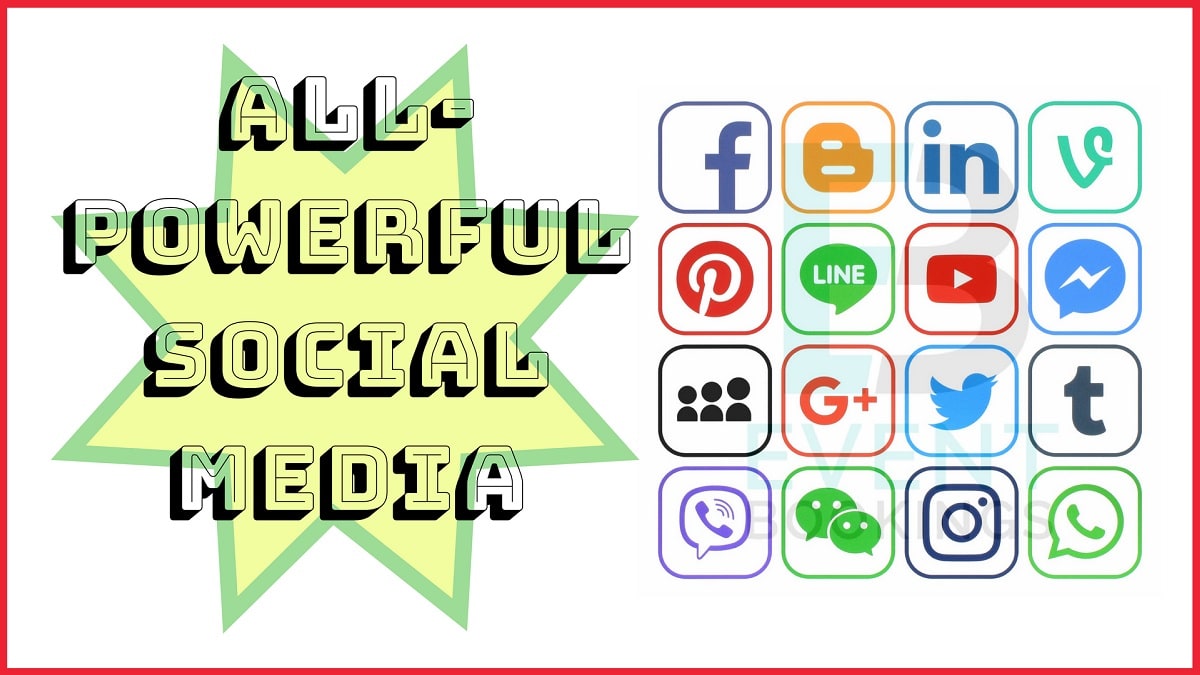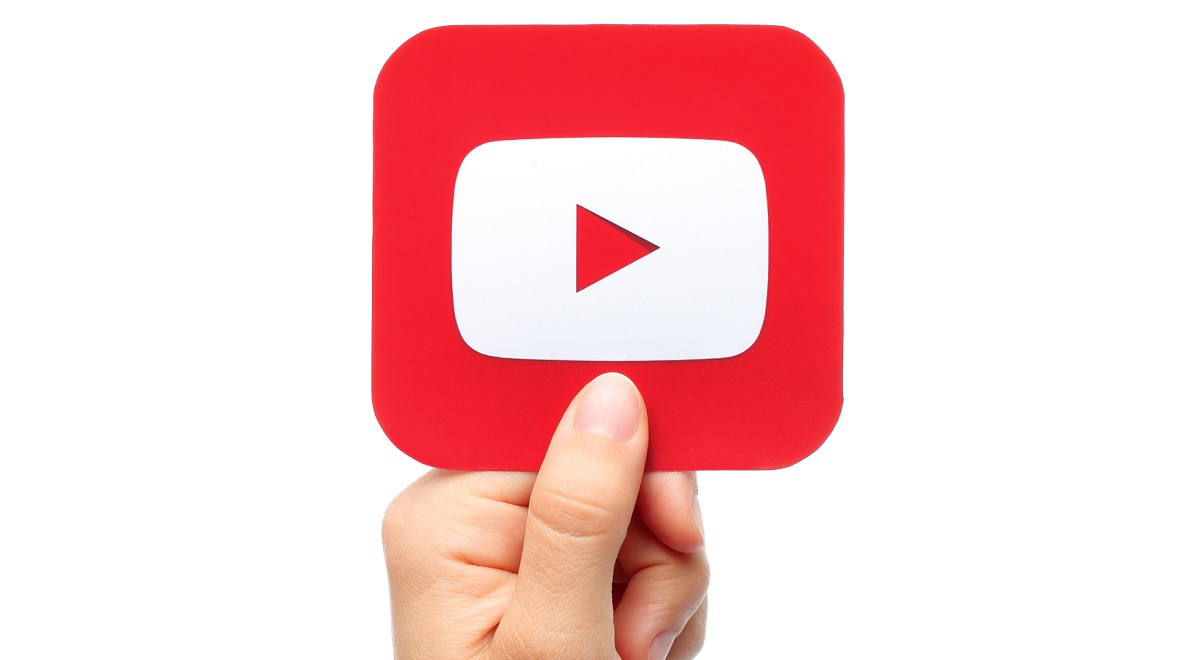When it comes to the marketing strategies that drive audience hype and engagement, social media is right at the top.
The beauty is, compared to other online platforms, event marketing on social media is not as complex or as expensive as you might think it is. It just takes a little patience and a proper strategy.
Reality is, more than two-thirds of traffic to ticketing and registration pages usually come from social media. Following the right marketing strategies on social media, you can drive much more traffic and convert most of these visitors into successful ticket sales/registration.
Social signal is one of the most crucial factors in online marketing because of its quick impact on stronger brand loyalty across the board, higher lead generation rate, and long-term engagement opportunity with the target audience.
From this comprehensive guide, you’ll get to explore some proven social media marketing strategies to make your events a bigger success. For your convenience, we’ve segmented the whole article according to the specific social platform, and its unique strategies.
Which social platforms should you consider for your event marketing?
Each social site serves a different purpose, and it’s crucial to use them the right way.
Facebook is all about engagement and awareness, while Twitter is counting on reactions and conversations. LinkedIn is most popular for professional networking and sharing industry updates, while YouTube is heavily video-focused for all kinds of audiences. Instagram and Pinterest are both images focused but concentrated on completely two different aspects of event marketing.
But interestingly enough, you can make coherence between all of your chosen social platform marketing- BUT, with the right set of strategies. For instance, if someone is sharing the same content on Instagram that is integrated with LinkedIn, chances are they’re missing their target audience on both platforms.
Keeping all these in mind, below we’ve discussed some highly effective social media marketing strategies for the 7 most popular platforms, along with the possibilities of inter-platform integration for different events. Our featured platforms are –
- Snapchat
- YouTube
Let’s start with the king of all social media – Facebook.
Event Marketing Strategies for Facebook

Facebook is a social behemoth, and the best avenue for exposure and awareness, with more than 2.5 billion active users worldwide.
According to Sprout Social, 74% of the users globally log into Facebook several times of the day, with 96% of access through smartphones and tablets (source: Statista). As the most popular social medium out there, you need to make the best out of your event marketing through Facebook.
Use the following methods to make your event a social blast that audiences can’t help but notice. Or even convert to one of your event goals!
1. Extend your reach by using the ‘Events’ feature
Posting the same event on Facebook and to your website might seem redundant, but it gives your attendees a familiar place to find details and reach out with questions. Moreover, when attendees RSVP via a Facebook event, they can promote the event on their newsfeed – thus extending your reach organically.
2. Utilize “Facebook Live” to broadcast engaging content
Video streams are a fascinating way to get a reaction from your audience for an event. Fortunately, Facebook Live makes it so easy to instantly start a live stream from laptops, tablets or smartphones. Just fix a time, and let your event followers know the stream will be coming a few days earlier, to build hype. When you start streaming, your followers will get a notification alerting them that you are broadcasting.
When planning your stream, keep in mind that it’s a superb opportunity to reply to questions, promote speakers, and create a buzz by highlighting the things that make your event appealing. You can even broadcast on the day of your event so that people who aren’t attending can see what they’re missing out.
An extended period of live streaming is likely to reach more viewers. If you have a plan to stream then give enough time to your followers to check their notifications. 10 minutes is the absolute minimum. People normally straggle behind, and if your presentation is in brief, then it might already be over by the time they tune in.
3. Take part in the conversation using “Facebook Groups”
It doesn’t matter which business you’re in or what your niche audience is; there is a community related to your event hanging out on Facebook. Be smart about seeking these groups and build effective relations with the people that manage them. The aim is to represent yourself and your event as a thought leader.
When you engage with the group, think about how you can add value rather than just marketing. The more you can add value, the more you can drive appreciation and paint your event brand as being worthy. Belonging to an online event community is a massive deal on Facebook. Don’t panic and try to chase instant results; aim to be a proactive member.
4. Maximize your reach using interactive “Facebook Ads”
Perhaps your event has a significant presence on Facebook, and you require an increasingly savvy approach for the paid campaign if you want to continue reaping the benefits of this channel. Facebook provides event organizers with an excellent opportunity to reach millions of potential attendees at a reasonable cost. Before you jump in, you should know how to boost your advertisement efficiently.
These are the key features of an advertisement that will turn your event into a super splash.
- Strong visuals
- Relevance
- Includes an enticing ‘Value Proposition’
- Clear ‘Call-to-Action’
Here are the types of Facebook ads you can choose from:
- Photo ads: Photo ads have simple formats to feature your high-quality event imagery, infographic, illustrations etc. You can overlay interesting information about your event onto the images.
- Video ads: within 5-18 seconds long video ads, you can tell your event narration- with your preferable motion, sound. The ads can appear in between a video content or in the news feed as a sponsored ad. Either way, you have a lot of scopes to be creative about your event-marketing narratives.
- Dynamic ads: Dynamic ads connect your event webpage’s service or feature catalogue with your created Facebook ad account and pixel. These ads feature the same services just as they’re shown on the website. These ads also let the visitors directly go to your site with a single “learn more” or “shop now” tap.
- Carousel ads: Carousel ads let you display up to 10 images or videos about your event with each of its web link. You can set your ad adjectives through this ad type, like conversions, reach, traffic, event brand awareness etc.
- Slideshow ads: Slideshow ads are lightweight clips on motion, text and sound- to convey a story about your event features or exclusivity.
5. In-person event marketing with “Facebook Local”
A newly rebooted app Facebook Local is a vital extension of Facebook, specially designed for in-person event marketing, updates, and services. Since this app can be easily synced with the primary account, it’s getting trendy among users. Out of 19 categories, users can find information about upcoming events nearby, reviews of the local event, ticket purchasing details, number of attendees, distance, popularity, relevance, etc.
With a personalized landing page, users can check all the upcoming or previous events in chronological order. This default ranking of games is based on several factors like the proximity of your event, the rating of your official page, number of interested people etc.
So in brief, here is how you can trade your event through Facebook Local –
- Step 1: Make an alignment in between your official business page and place page
- Step 2: Research on the relevance of your event and the target audience.
- Step 3: Create an event from your official page by filling out different fields of your event on the pop-up window. The fields have to be filled based on earlier research. Publish it on Facebook Local once the event is created.
- Step 4: To make your event more relevant to the audience and to increase the event’s search ranking, consider online and offline promotion.
- Step 5: To get more responses from the potential customers, use the traffic or conversion objectives by investing in Facebook event ads.
Facebook Local can be a natural process to get your event live with more enrolled attendees. As a door of endless possibilities for event business owners and event marketers, having frequent access to Facebook Local is a must.
6. Facebook messenger and chatbot marketing
Messenger marketing is a great act of event marketing to your prospective event attendees because of its massive popularity worldwide. It has become an essential social media marketing platform- mostly because it’s not limited to exchanging messages, calls and different sorts of contents (images, videos, stickers, gifs, document files, audio etc.) anymore. The primary difference between email marketing and Facebook messenger marketing is the leverage to use chatbot or automated software integration in business conversations on messenger.
With up to 20 billion casual- business messages exchange and 300,000 active messenger bots into date’s platform, the messenger is on the rise. Chatbots add atomic power to messenger marketing by stimulating conversations, gathering attendee feedback, tracking reservations, providing 24/7 customer service, auto-responding to attendee queries, and so on.
There are many tools like MobileMonkey, ChatterOn, BotKit, Botsify, where you tailor messenger chatbots that suit your event needs.
Before you jump into the next platform, Instagram, here’s a reminder for you. Since Facebook has officially acquired Instagram, Instagram has been the ultimate healing factor for Facebook when the massive popularity of Twitter started to take over the world.
So you can make marketing on both Facebook and Instagram simultaneously.
Event Marketing Strategies for Instagram
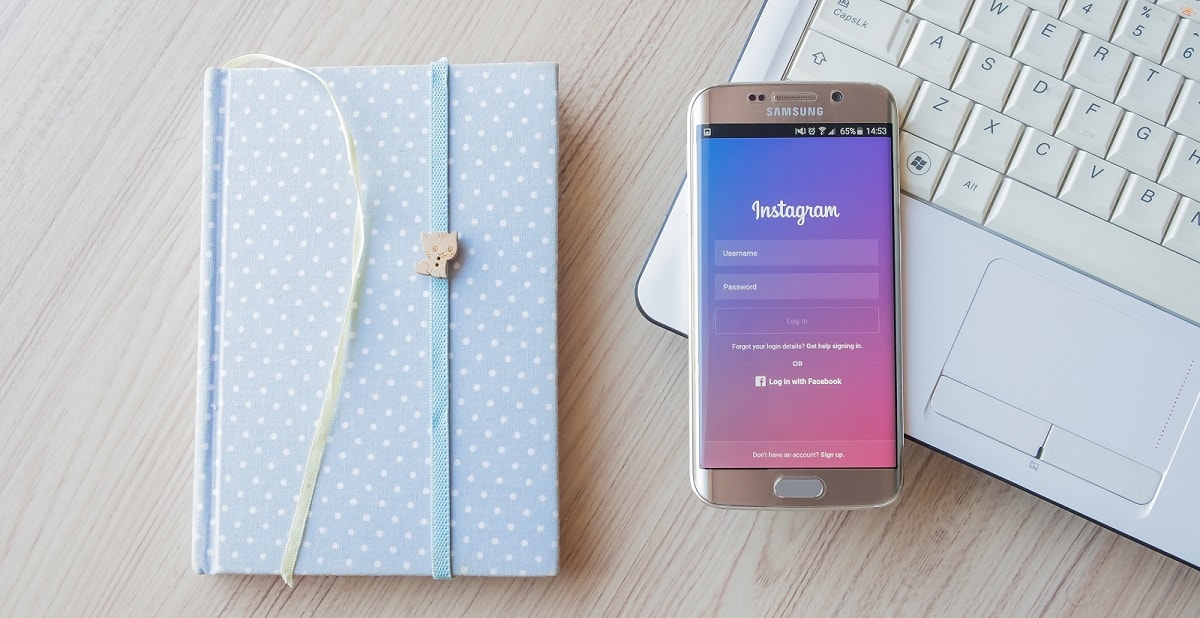
Instagram is an image-focused social platform that heavily depends on hashtags being explored. This is an excellent place to group photos of your event for a live wall which, along with Instagram’s brand new follow hashtags feature makes searching and connecting with your attendees easier.
In June 2018, Instagram has passed one billion monthly active users, and currently enjoying 500 million daily users! So if you are planning to host an interactive event with millennial attendee-base, you know where to invest in! Let’s dig right into all the aspects of marketing on Instagram.
1. Welcome followers with a video invitation to your event
Instagram has already made it very easy to give a warm welcome through direct video messages. You will get 15 seconds to greeting your new followers and invite them to your event. This is particularly effective when the person making the video will also be at the event to welcome attendees. Everybody likes to see a familiar face when they are in unfamiliar surroundings.
2. Make the best use of hashtags
Hashtags have become a social media phenomenon, not just for Twitter, but for Instagram as well. The reason why most of the event businesses include customized or branded hashtags on Instagram posts is because hashtags boost audience engagements make posts very easy to find.
According to a recent statistics, branded hashtag included Instagram posts generate more potential attendee interactions. Here are some of the Instagram hashtags you can use to have all your bases covered –
- Branded hashtags: Business and brand-oriented
- Niche hashtags: To set up a specific tone for your event marketing
- Industry hashtags: To be relevant to your business industry
- Content hashtags: To directly connect the audience with your contents/posts
3. Take advantage of “Instagram Stories”
Instagram Stories are viral nowadays. They have a feature that allows users to upload a series of attached clips as they post about their day in a video story. For an event, this is an outstanding way to give followers on Instagram a backstage pass. After all, people like to see what is going on behind the scenes.
You can give your audience a daily teaser of what’s next to come via Instagram stories. On the day of the event, try to keep the stories coming so the followers who didn’t make it can see what they are missing. As each video clip you share will be live only for 24 hours, you don’t need to worry unduly about video quality.
4. Share the location
Share with people a sneak peek of the venue. Let them see how the exterior and interior looks like thus they expect insinuation of the type of atmosphere. Do you want to know how you can find the perfect venue!? Why not leave up to the audience’s vote!?
By uploading each photo of a potential venue on Instagram let audiences decide which one would be the best location. Ultimately the event is for them so why not let them have an opinion where the place will be.
Finally, you can also post brief videos. If you get the opportunity to walk through the facility, then film the location when you are visiting the area. This is very important to add a brief description of each venue, making highlights of worth mentioning such as a direct comment on the outdoor or architectural views.
5. Make the use of UGC
UGC (User Generated Content) is possibly the best and the most affordable forms of content where you let users post engaging contents on your behalf. A recent study showed that UGC in Instagram has up to 4.5% higher conversion rate.
UGC is a type of Instagram marketing strategy, where customers post reviews of your brands as forms of photos and videos on their own feeds. For event brand marketing on Instagram, UGC holds an innate sense of authenticity, trustworthiness, and audience engagements. UGC for event marketing can even be as simple as running a poll, hosting a reward or free giveaways. Here are some of the ways-
- Host contest and giveaways
- Reach out to your attendees and ask-incentivize for UGC
- Don’t forget reposting and crediting the original poster
- Create your event brand hashtags and use it effectively
6. Leverage Instagram ads for your event brand
Potential attendee is easier to grow on Instagram, so there’s no alternative to Instagram ads these days when it comes to your event marketing. In fact, Instagram ads have become so powerful that it’s been projected that parent company Facebook will heavily rely on Instagram ads for its fast-paced ad revenue growth by the end of 2020!
Here are some of the ad formats with multiple call-to-action buttons from which you can choose the one or multiple to fit your event marketing scheme-
- Stories ads: Full-screen ads that appear in between stories
- Photo ads: Visual content for your event that can directly take visitors to your profiles can be directly connected to your event website. Visitors can swipe through the images/videos ads.
- Collection ads: Users can have a direct option to purchase products or services
- Video ads: Very likely to be clicked and viewed on Instagram.
7. Harness the power of IGTV
The latest Instagram feature, Instagram TV (IGTV) is a game-changer for event marketers to leverage their event marketing campaign. The diversified possibility of taking over YouTube and Facebook video sharing in the most social way is a revolutionary way of plunging into event marketing and audience engagement- in the most organic with the least cost.
Here’s how you can set up an IGTV for your event –
- Step 1: set up an IGTV channel on both mobile and desktop by installing IGTV app.
- Step 2: Upload previously recorded videos in vertical or portrait mode. The ideal size ratio is 9:16, but a ratio as close to square as 4:5 is also supported.
- Step 3: Add clickable links in video descriptions
- Step 4: Hosting Q&A or AMA (Ask Me Anything) sessions
- Step 5: pre-event preparation, behind the scene snippets video clips, sneak-peeks at the inner workings.
- Step 6: Make your videos visible on Facebook
8. Build hype with a visual countdown
Instagram is a fabulous platform to build hype and momentum for any types of events. Some organizers or brands use it to badass start their event campaigns in an eye-catching manner that provides the event date and duration. This sort of countdown may help your followers to feel the part of your journey.
9. Give the unique visual personality of your event
Instagram can help you visually encircled to your event’s brand identity. Imagine if it like a scrapbook – each photo and video adds an extra dimension, showing followers what your event is all about. By building up a unique personality, audiences can have a better understanding and attachment to your event. You can portray your event in any way what suits best to reach attendees. For example, some event organisers post artwork, quotes and memes.
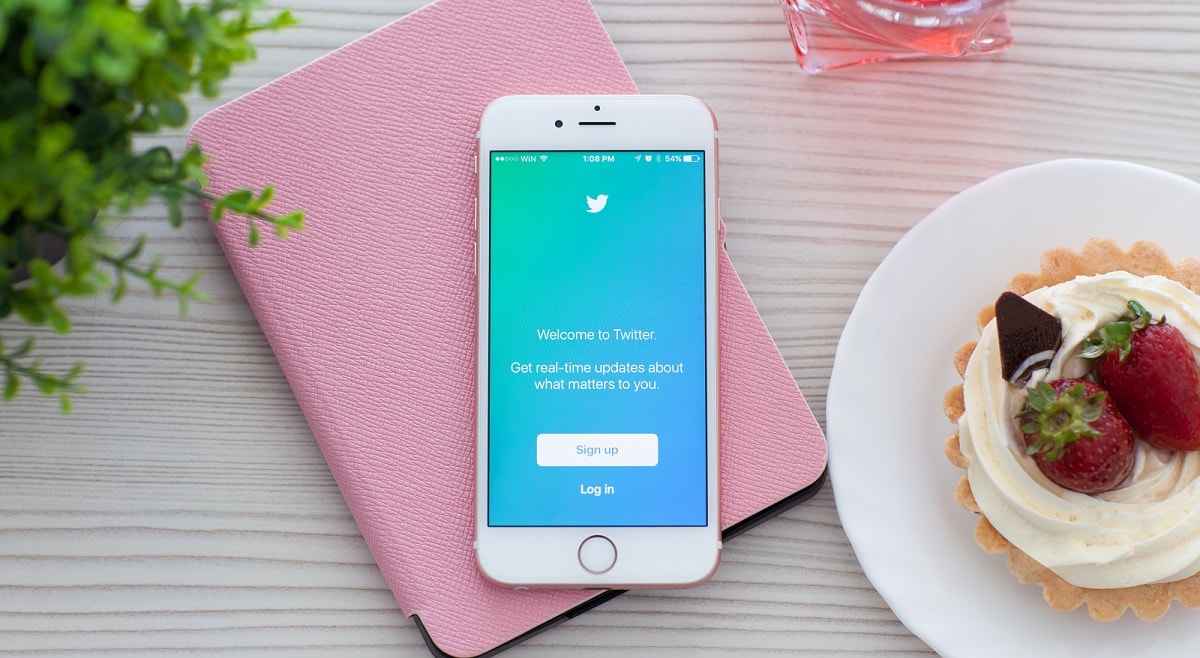
Twitter is a fantastic platform for short burst updates and flash ticket sales and can help by building customer relationships with potential audiences. It allows efficient, comfortable interaction in comparison to Pinterest and Instagram, and suits quick attendee contact, video streaming or Q&A sessions.
Right at this moment, Twitter is possessing over 330 million monthly users with over 145 million daily users! So you just know, to build up hype and to generate an online buzz around your upcoming event, Twitter is nothing but a sure-fire platform! Here’s how you can give your event marketing a Twitter wrap.
1. Track event trend with unified #hashtags
By using hashtags correctly, you can boost engagement and awareness for your event.
The more people using your hashtag, the more your event gets promoted to the people who interact with it. While communicating with your audience, entice them to use your event hashtag before, during and after the event.
You can check how frequently your hashtags are being used with free tracking tools like TweetDeck or Hootsuite. That’s a superb way to determine your Twitter campaign’s popularity. Just make sure if you want to use a hashtag, it isn’t already attached to another event or subject to avoid ambiguous results.
Dreamforce, one of the largest SaaS user conferences in the world, created the event hashtag #DF18 and the hashtag #RoadToDF18, which promoted a series of videos leading up to the event to build excitement.
2. Spend a little dough to enhance engagement on Twitter
If you don’t have a large number of followers on Twitter, using their advertising tools can be problematic.
For increasing engagement, we recommend using their Tweet engagement campaign; this campaign helps your target audiences to retweet, share and favorite your Ad creatives. It will eventually increase the impression value of tweets which means your content will be able to reach more people as per campaign setup.
3. Get organised with “Twitter Lists”
Ever wonder who is tweeting about your event?
Do you want to find out if they will be in attendance the following year?
An excellent way to organize your audience, supporters, and exhibitors in one area is through a Twitter list. After adding all the handles you would like to put on your list, you can easily access your records from your Twitter page. From there, you will be able to keep an eye on the list members’ Twitter activity to monitor their public conversations (when they’re relevant to your event) in one central area.
Think of it like making a community or group. When you are ready to boost your next upcoming event, you will have the list of past attendees well prepared to get started.
4. Respond to as many tweets as possible
Research from Lithium found that consumers expect to be responded to within one hour of a tweet. If they aren’t responded to in that time, they’ll punish you. Either by disengaging with you, or taking a negative view of your brand.
If you do respond to the tweets, they’ll be 42% more likely to mention you and your event to their friends and family. That’s more uses of your Hashtag and more talk about your event. Which leads to more exposure and a higher chance of trending.
5. Make the best use of Geo-Tagging
Geo-Tagging is one of the most underrated yet gold-standard features on Twitter that happens to be perfect for event marketing. Every enabled geotagged tweet allows you to selectively add location information to your tweet and let the visitors follow the geotag to view photos, videos, updates, and so on.
So in other words, your enabled geotagged data will inform you when the visitor publishes the tweet, details like where they were born, employed, lives, and so on! With all these data, you can create a buzz around your event location and make more local knowledge among the people about your event.

Snapchat is a multimedia messaging app used widely to share photos, videos, text, and drawings.
Event marketing on Snapchat has been proven to be very lucrative because of its massive users and influencers’ hub spots. And lately, Snapchat is showing no sign of slowing down and is the fastest growing social network.
Snapchat videos are being watched more than 10 billion times every day. The sophisticated part of capitalizing on that is coming up with exclusive ideas to promote your event, targeted for a relatively younger generation. Snapchat now has over 360 million monthly active users all over the world. So if your event’s target attendees are mostly youngsters, you need to take event marketing on Snapchat a little too seriously.
1. Design a Snapchat Geofilter
Another unique reason why Snapchat instantly creates a big buzz is because of their filter emulation.
It’s a proven fact that the best and the most authentic way to reach out to your potential event attendees on Snapchat is designing and purchasing your own Snapchat filter, also named as Geofilter. A large number of businesses are using it to keep communication with consumers, show stories and have one on one interactions that create personal connections.
There is an unequivocal exclusivity about Geofilters that make them preferable. Users can only access the filter if they are in a specific place at a particular time and that could be your event. People are snapping Geofiltered photos and videos of the event to their friends generating buzz, which could be especially beneficial if your event happens on a regular basis.
2. Utilize AR lenses
AR lenses are undoubtedly the most flattering and interactive feature of Snapchat. For event marketing and branding, AR lenses are classic and the most interactive Snapchat monetization.
Like who doesn’t want everyone to see them in perfect lighting and flawless makeup? Or how about some silly yet insanely interactive filters like flipping sunglasses, sticking dog-tongue out? These AR lenses are coming up with more and more varieties in each update.
On top of that, this ad type lets different brands to create exciting and interactive moments for the attendees through augmented reality-with a brand logo stuck in a corner.
There are 2 kinds of Snapchat AR lenses – the Face Lens and the World Lens. The Face lens feature has the innovative technology to precisely detect the user’s whole facial structure and transform into the characters you want to your attendees to become!
A World Lens, on the other hand, recognizes your location from the map the environment around your potential attendee. Your event branded AR lens users can use the rear-facing camera to view their world through a different light.
3. Create a customer Snapcode
Event marketing is not just about selling your event itself; it’s mostly about upheaving your brand value as an event organizer. With the right marketing strategies, your interactive business presence on Snapchat, you can always be a step ahead.
Almost similar to QR code, you can create a custom Snapcode for your Snapchat business account, which lets you reach out to your audience through digital communication. Enter the URL of the event website, and put the event brand logo within the ghost logo. Make it interesting and easily recognizable, so the Snapcode catches your audience’s attention right away.
4. Bring audiences together with the “Our Story” feature
Snapchat makes it possible for users with the “Our Story” feature to share photos and videos to the same timeline. Everyone at the event can see a new icon appear in the app which lets them see which attendees like what they are sharing.
Inform guests before getting stared that you will be activating the feature and persuade them to participate and submit their short videos once the event is in progress. This will let viewers see snippets of the event as seen from the vantage point of attendees. If your attendees are not so tech-savvy, remind the guests that the app is free to download and use for the event.
5. Make an Advertisement with “Snap Publisher”
To make your event theme more fun, relatable and casual to your audiences, Snapchat is just the right place. Once you go for the paid advertisement, you’re only endearing behaviors with your potential event attendees. On top of that, you can also repurpose existing photos and videos for Snapchat Ads, automatically converting portrait media into the landscape by Snap Publisher platform.
Snapchat’s dependence on its portrait format used to be irritating to someone, especially when you must pay a designer to create specific content. But now you can repurpose existing photos and videos for Snapchat Ads, automatically converting portrait media into the landscape by Snap Publisher platform. Here are some types of Snapchat ads, under 2 categories, filter ads and attachment ads –
- Sponsored Geo-filters
- App install ads
- Article ad
- Web view
6. Allow ‘Snap Famous’ influencers to do a Snapchat takeover
One of the strategies that all of the organisers unanimously agreed on is the benefit of the Snapchat takeover. Allowing Snapchat influencers can assist you to connect with your target attendees entertainingly and creatively which will surely boost the awareness of your event. Sometimes it could be scared that if you are not sure what they will do or say, let the influencer go with it.
After all, most Snap Famous users are the trailblazer of the platform and know precisely what to do to get a successful engagement.
7. Turn Your Story into a Memory
Either after the event or day-by-day, download your Snapchat Stories before expired. As stories remain only for 24 hours, by saving them you can reutilise these content weeks, months or even years after the event has finished.
Saving your Snapchat Story to your camera roll determines that you may repost them to your account later down the line.
You can also populate it on your social channels and promote your Snapchat account to get a large number of following to increase the popularity of other events in the future.
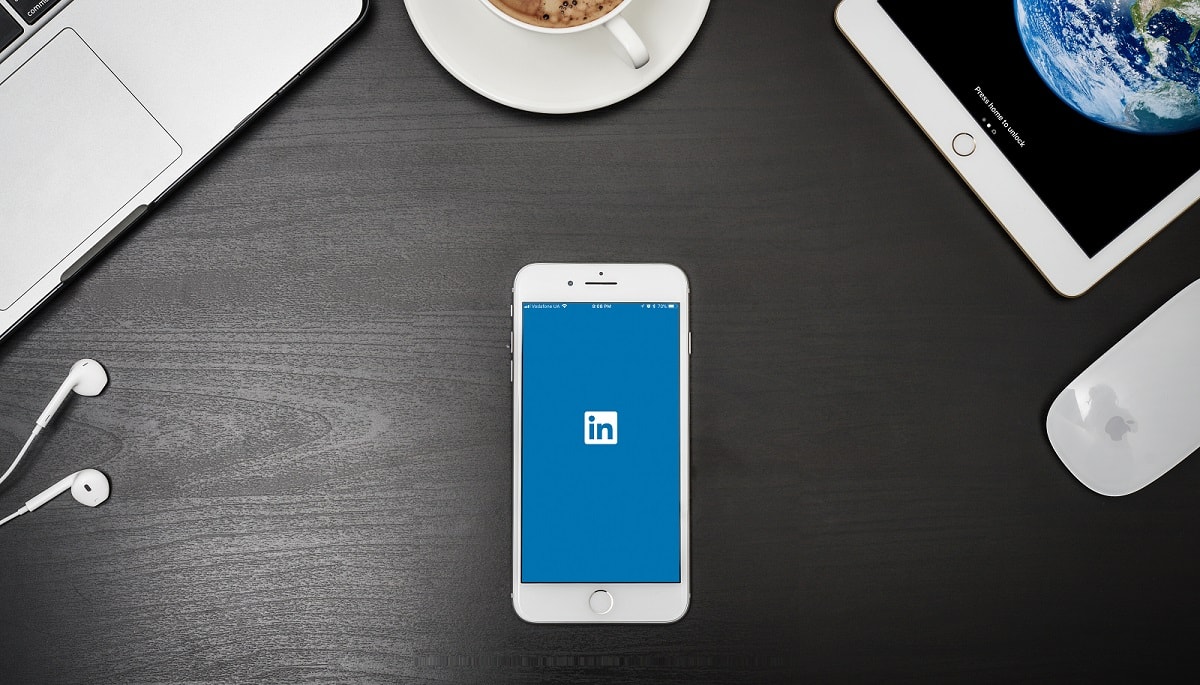
You should have a LinkedIn page for your event, especially if your event is directly associated with students, entrepreneurs, professionals, ecommerce venture, corporate, or tech personas. If not, you are missing out on a bunch of audience members who are already primed for professional development and networking.
Nowadays, many companies are utilizing LinkedIn to promote ticket sales, since LinkedIn now boasts more than 675 million users across the globe. And guess what, more than 79% of B2B marketers consider LinkedIn as a very good lead generation source as well!
So why wait? Let’s start!
1. Use a brand profile to boost the event
Leading up to your event, make sure you are posting the same updates and information to your LinkedIn business profile as you shared to Facebook and Twitter. When updates are made, notifications of changes appear on your followers’ newsfeed.
Put the same effort into your LinkedIn community as you did on Facebook and Twitter. Use the right visual content to boost connection rates, just as you did on other channels. It’s the professionals who are scrolling their LinkedIn feeds to find advice, opportunities and information, so make sure when you are posting your ad more that it offers some benefit to their professional lives.
2. Populate Your Event with LinkedIn Ads
LinkedIn advertisements appear to the people whose profile information matches that of your leading demographic. You can also use LinkedIn’s sponsored updates to boost your event posts and grow your target audience.
Your potential audiences from LinkedIn are highly specified, unlike other platforms. The audiences are professionals, executives, influencers, decision-makers, and prospective business owners. This means you can run event campaigns with clear, definitive goals, like engagement, impression, event brand awareness, lead generation, pre-event promotion, and so on!
There are a few types of LinkedIn ads. You have to tailor your own event ad out of many options. Here are some of them –
- LinkedIn sponsored content: Typical in appearance “boosted” posts from the event page or company’s own feed. Any other types of LinkedIn ads like video ads, carousel ads, etc. can be formatted as “boosted” posts.
- LinkedIn Dynamic ads: basically as personalized as you can get with your LinkedIn advertising. Advertisers can choose to promote job postings, content downloads.
- LinkedIn programmatic display ads: With these display ads, you can target the largest professional audience based on intent or personas – but more on LinkedIn advertising targeting options later.
- LinkedIn text ads: The closest to Google or Bing search ads that you can get on the platform. LinkedIn text ads operate on a familiar pay-per-click or impression basis, and they’re featured in the sidebar.
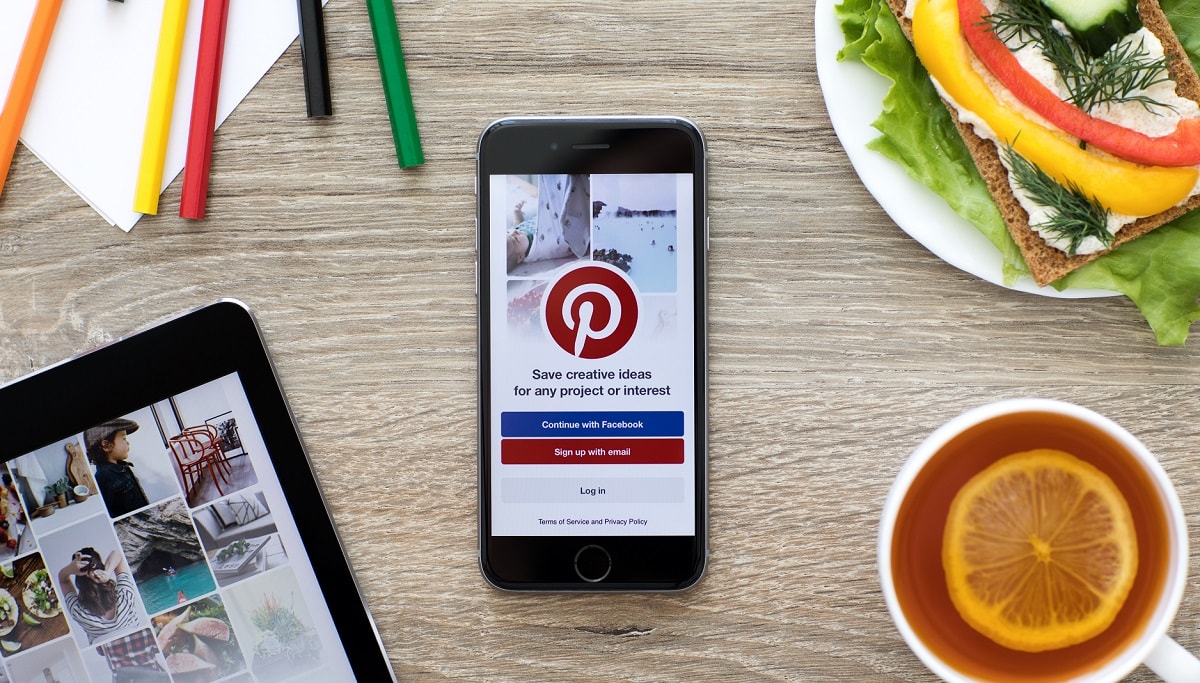
Living in the shadows of social media giants like Facebook and Twitter, Pinterest is a hugely overlooked yet powerful platform that should have a place in every event organizer’s social toolbox, with more than 320 million monthly active users.
So if you are an event organizer looking to boost your event marketing in style, then this is one of the best choices for you. Most of the users on Pinterest don’t even interest in the description even though that’s how you may rank your pins well with SEO.
Pinterest is an eminent, personalized social channel for helping event marketers with their behind the scenes planning and brainstorming work. Here are some useful event marketing features and tactics for Pinterest.
1. Crowdsource
Create a collaborator board and invite audiences to contribute. This will provide you with an instant image album of the event which can be used for promotion. Make some more buzz surrounding by giving prizes to the most repinned photos.
Another firm approach to consider the crowdsource for your event planning. Ask your followers to pin their ideas for events, and try to incorporate the best into your event.
2. Create community boards
Give event audiences and speakers another way to communicate, and expand your network by making community boards where speakers and attendees can develop the content for you.
3. Give your collaborators recognition
The venue, artist, catering, and photographer all make up your event. Make sure to buzz them a shout on Pinterest by pinning their performances and services. This will help you to build collaborators relationships as well as give the motivation to share with their community and potentially widen your fan base.
4. Design a Private Board for Press
Try to pledge reporters and bloggers exclusive content, for example, a major announcement before the event by using the private Pinterest boards. This will inspire them to report on it, and populate with their networks, as they would have the inside scoop.
5. Run a Pinterest competition during the event
By using Pinterest contests and competition during the event, your event brand will be able to engage with your current and future attendees in a more personal level, with a more affordable way! Running fun competitions will also help you with attendee information data about their preferences, feedback, and so on. Later on, you can put these data lead to generating actions like offerings, discounts, coupons, or souvenirs!
YouTube is not only the second most popular social media platform, it’s also the second largest search engine and sustainable video marketing tool in the world!
With more than 2 billion daily users and over 5 billion videos watched per day, YouTube is an intimidating online marketing choice for anyone who wants solid web exposure.
As self-explanatory as it can be, event marketing on YouTube can also be pretty challenging unless it’s done with the right approach to the right attendees.
Have an active presence
Not just a YouTube channel – for an effective event marketing in this platform, you have to prove the authenticity as an event organizer or marketer by uploading exciting videos of your previous events, along with visual testimonials. If you’re new into event marketing, consider uploading multiple promo videos of your upcoming event. Keep your channel “visible” so that everyone can look into your event.
Remember, the more views and engagement you create through your videos, the more possibility for your event to stand out among your potential attendees! Here are a few tips-
- Show off your brand in a consistent way regularly
- Update your YouTube channel with a branded header image, your event avatar or logo.
- Integrate your other social media profiles with YouTube for users, visitors’ easy access to exploring your other platforms and sharing your video contents.
- Via annotations, make sure all of your video subjects suggest other related event videos. Because of the relevance, the viewer will keep an eye on your channel.
Keep your channel and videos optimized
To get a lot of traction and views to your YouTube videos, you have to optimize your videos. Consider creating search-friendly video titles and descriptions as an essential video ranking strategy for your event videos.
Some tips on how to rank your YouTube videos –
- Try all kinds of potential keywords into the YouTube search bar to check the relevance. You can also click on the autocompleted search terms to check the similar existing video contents.
- Start the optimization procedure from your profile. Captivating banner image (2MB max, 2560 x 1440 pixels) highlighting your event(s), a keyword-enriched bio, contact information, location details, links to the event web address and other social media profiles are some easy yet functional steps to start from.
- Don’t forget to include a link to your event website and ticket sale page in the profile bio.
- You can use powerful tools like Google Trends or Google Keywords Planner to use the most appropriate video titles and descriptions, including up to 15 hashtags
- To have your videos SEO optimized, make sure you have an interesting, custom made video thumbnail to help your content stand out.
- If you have a number of existing video contents, you can invite new visitors or potential event attendees to your channel with a short video trailer. A video trailer will help you quickly deliver the insights of your event videos along with other relevant video contents.
- Last but not the least share your YouTube videos in all the other social channels. Consider embedding YouTube channel into your articles, blogs or event in your bio.
- If you try to reach out to broader viewers and event attendees through YouTube, consider adding subtitles and closed captions. This won’t just help the audience to understand your content better, but also help you to highlight relevant keywords.
Related: How to keep your attendees engaged before, during, and after the event
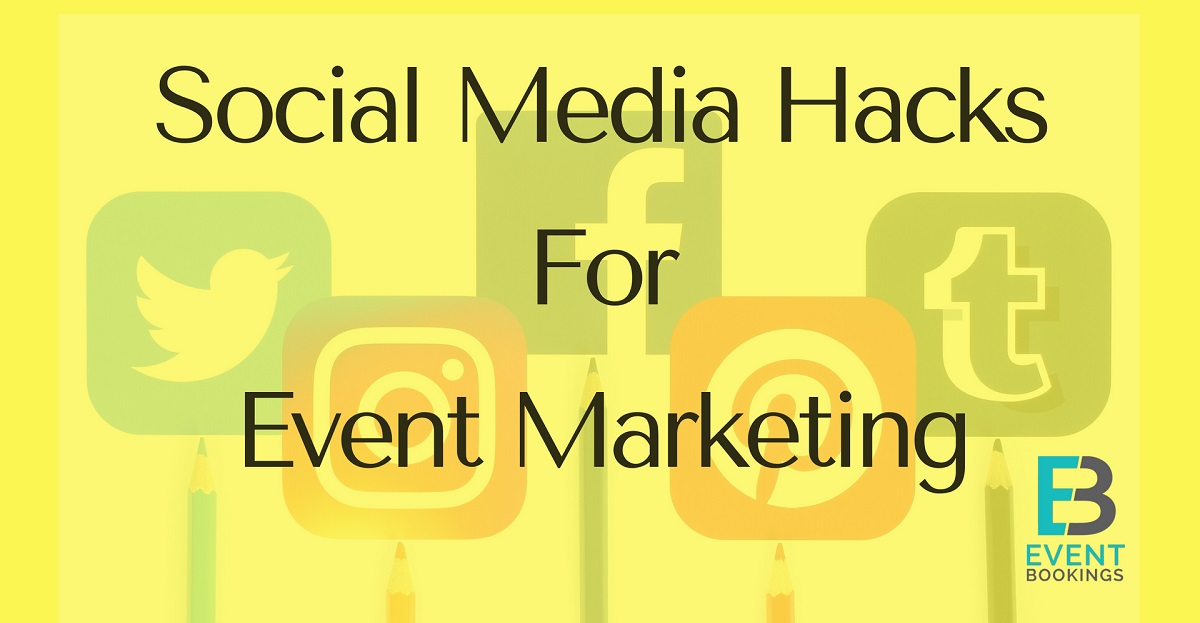
Social media is linked to every aspect of our daily lives. It is no longer a choice of using it or not; the question is how we can use it to its maximum advantage. Social channels can provide enormous benefits to your events, so make your presence unique, worthy, and memorable for your attendees.
Here are some exclusive ideas you may include in your next event marketing plan:
Event landing page
An Event Landing Page, as a part of event marketing, can serve as a one-stop store for your visitors and potential attendees to learn all the necessary details about your event, directly integrated to social media.
So, how do you define a good event landing page?
A good and effective landing page contains not just the details of the event, but also a compelling approach, clear CTAs to register for the event, and an appealing design that goes with your event perfectly. You can also add UGC, social media posts, video testimonials from previous year events to increase the possibility of conversions.
Since one single event landing page might be the only virtual avatar of your event, you need to make sure you’re getting all the landing page elements right. Tools like SplashThat or Unbounce can help you design the perfect landing page for your event.
Snapchat Game
The idea of implementing a filter in Snapchat is nothing new. Many organizers do that and audiences expect to find a filter when they arrive. For your upcoming event, make a filter game which can be accessed like other filters by selecting the lens from the camera screen. Instead of the augmented reality filter which appears on a user’s face, they can now enjoy a game. Usually, this game unlocks a unique filter only accessible by playing the game.
The famous champagne brand, Moët made a Snapchat game where users swipe to shoot corks at a tower of glasses. From a modern marketing perspective, the game was a brilliant idea, and many other brands have already tried it.
Event branded stickers and emojis
Even though texting is not technically social media, many brands are evolving in incorporate branded text messaging.
Companies like Visixtwo are following this trend and encouraging sponsors to engage with their audience with custom-made emojis and stickers. If your stickers and emojis can bring extra fun, your attendees might continue using them even after the event – expanding your marketing reach without any additional effort.
Social Vending Machine
Social vending machine is an interesting idea.
Just like a traditional vending machine, you can stock whatever you want. Many organizers have taken advantage of this and stock the machines with brand-related apparel and swag.
You can also deploy it as a sponsorship opportunity and have your sponsors fill the machine with their products. The possibilities are endless and will be sure to entertain your audiences. You can’t exchange money to purchase what’s inside; instead, to activate the machine your attendees need to tweet with a specific hashtag to a dedicated handle. Once the tweet has been posted, the machine automatically discharges a product.
In 2015, Topshop sponsored a Twitter-activated vending machine at London Fashion Week. Ideas like this have the potential to rapidly increase the follower number on social platforms.
Skrite
Skrite combines augmented reality and social media to make a fun audience experience.
It calls itself an augmented reality social networking platform. People directed their phone at the sky to create and view messages left by other Skyers.
You can incorporate Skrite into your event marketing strategy and event goals. Ask your audience to submit a photo of their Skrite message or to find a particular message from one of your sponsors.
Wrapping up
In online event marketing landscape, social media is a dominant field with endless possibilities – boosted traffic, user-generated content, better brand exposure, easiest channel to keep track of target audience, most effective medium for customer engagement, building a solid event brand loyalty and so on.
In short, all social platforms in combine foster long-term relationships between event organizers and attendees, and grow a community’s buzz surrounding an event.
The extent and possibilities of social media marketing for events are so dynamic that it will take ligatures to finish. But still, from customer service to sell more tickets, we tried to help you find the right set of social media strategies for your events in 2021 and beyond.
Which platform(s) you think will fulfil your event marketing needs? Did we miss any important strategy? Are there any social media you think may help in event marketing?
Start the conversation by commenting below.
And stay tuned with us; we’ll keep coming up with frequent updates and trends on event marketing strategies.
